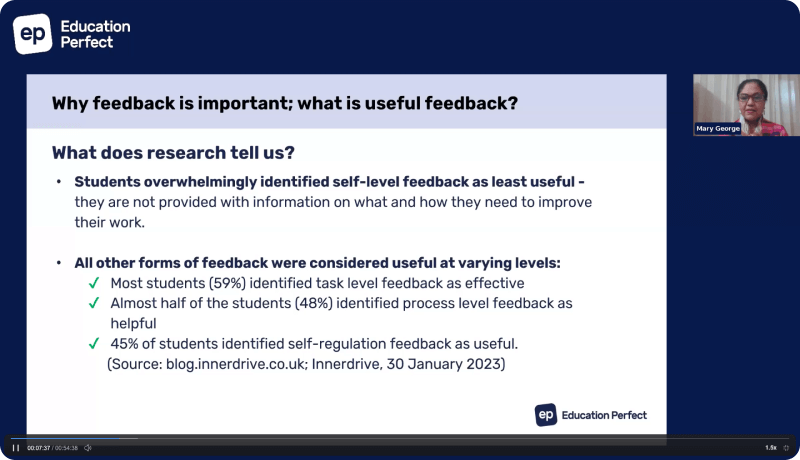Understanding student anxiety in mathematics

Mathematics anxiety has been a matter of concern in education and refers to the feeling of tension, fear, and worry about mathematics performance. This phenomenon is consistently related to poor mathematics performance and deserves closer scrutiny, given many students in New Zealand do not perform well in mathematics – especially Māori and Pasifika students.
So what are the symptoms of mathematics anxiety? What might be the cause of mathematics anxiety? What is the relationship between mathematics anxiety and students’ motivation to learn mathematics? What is the relationship between maths anxiety and the students’ maths performance? Do more girls tend to have maths anxiety than boys? Most importantly, how can we help students overcome their maths anxiety and encourage them to keep learning mathematics?

Recognising mathematics anxiety
In the classroom, I sometimes hear students say, “this is too hard”, “I don’t understand this”, “I can’t do this”, and “I’m giving up.” These students are showing their need for the teacher’s attention or help. But not all struggling students tell the teacher what they are thinking about or ask for help when needed. In such cases, how can we identify which students have anxiety and need our help? What symptoms we can observe from students if they have mathematics anxiety and need more teacher attention. The symptoms of mathematics anxiety are divided into physical, emotional, and psychological symptoms. The physical symptoms of mathematics anxiety are similar to those of general anxiety. The only difference is the frequency and environment in which it happens. You may see signs in the mathematics classroom or during the mathematics exam environment.
The physical symptoms are a racing heartbeat, irregular breathing, sweatiness, shakiness (I have seen students have shaky heads before the exam), biting nails, a feeling of hollowness in the stomach, and nausea. The emotional symptoms we can notice include helplessness, lack of confidence, and fear of getting things wrong. For the psychological domain, the indicators manifest as fear where students are afraid the teacher might ask them questions, fidgeting because they don’t want to stay in with mathematics environment, being upset by the need to do mathematics questions, nervousness which makes it hard to concentrate on a mathematics exam and worry where students may pretend to be sick to void the mathematics test.

Factors that influence mathematics anxiety
Identifying students with mathematics anxiety through recognising the significance of their symptoms is one part of the puzzle, but we also need to understand the causative factors. After significant research, the following factors have been shown to be significant.
Age – Mathematics anxiety appears to increase with age during childhood. Younger children tend to have less mathematics anxiety than older students. In the total mathematics anxiety scores, the older students scored higher than the younger students. Thus, it appears mathematics anxiety with age is consistent with finds that attitudes toward mathematics change with age (Dowker, Sarkar, & Lool, 2016; Baloglu & Kocak, 2006).
Genetic – Genetic factors accounted for roughly 40% of the variation in mathematical anxiety. The multivariate genetic analyses suggested that mathematics anxiety was influenced by the genetic and non-familial environmental risk factors associated with general anxiety and additional independent genetic influences associated with mathematics-based problem-solving (Wang et al.,2014; Dowker, Sarkar, & Lool, 2016).
Gender – The research shows that when males and females have the same education, they have the same ability to learn mathematics and show no differences in actual mathematics performance. However, there are a few articles indicating that females tend to have higher mathematics anxiety levels than males and rate themselves lower in mathematics performance, even though both males and females showed a negative correlation between mathematics anxiety and mathematics performance.
Culture and nationality – Children in high-achieving countries might have a lower level of mathematics anxiety because they do well in mathematics. Other research shows that students in Asian countries report low values in mathematics self-concepts and self-efficacy and high mathematics anxiety. Students in Western European countries show high values in mathematics self-concepts and self-efficacy and low mathematics anxiety. That result can be attributed to Asian students and their parents tending to set high goals, and if they can not reach the goal in their school performance, these factors will contribute to their mathematics anxiety. This is a learning that we can take into multicultural classrooms in Aotearoa.
Negative experience – When teachers don’t focus on students’ learning but instead focus on completing the curriculum and the curriculum outcome, that may also cause students’ mathematics anxiety. This links to teaching style, which often focuses on memorisation and rote recitation in environments where mathematics anxiety is observed. The other possibility that could give students mathematics anxiety is that the teacher suffers from it if they are not confident with the material themselves – which translates into their teaching. Another common negative experience for New Zealand students is the effect of ability grouping, where students may feel pressure to keep up or to transition to a ‘better’ group.
Timed exam and testing – Evidence strongly suggests that timed tests cause the early onset of math anxiety for students across the achievement range. Recent studies show that students as young as Year One and Two experienced mathematics anxiety due to the pressure of timed mathematics exams.
Mathematics anxiety and motivation
To find out the relationship between mathematics anxiety and mathematics learning motivation, there are two variables we also need to look at. These are self-concept and self-efficacy.
Academic self-concept is described as an individual’s knowledge and perceptions about the self in an achievement situation. Therefore, students with a positive self-concept will see themselves as always doing things well. Students with a negative self-concept will see themselves as not good at anything. Self-efficacy is defined as having “belief in one’s capabilities to organise and execute the courses of action required to manage prospective situations.” (Bandura, 1997, P.3). Therefore, academic self-efficacy indicates the students’ belief in their capability of how well they can perform in the academic tasks assigned. The meta-analysis conducted by Li et al. in 2020 suggests that the relationship between mathematics anxiety and motivation is a moderate, negative association and that the strength of the relationship between self-concept and mathematics anxiety has the strongest correlation compared to self-efficacy. This means that students who believe in their ability in mathematics performance have a stronger relationship with mathematics anxiety than their actual mathematical achievement.
Anxiety and mathematics performance
Anxiety can lay down roots after a student has a negative mathematics experience, such as humiliation from poor performance in a test, or a lack of support from their teachers, peers, or family. Such students tend not to want to do anything related to mathematics and avoid studying mathematics which in turn leads to poor preparation before the mathematics test or exam. This vicious cycle makes the students more anxious about mathematics.
There are several studies indicating that there is a moderate, negative relationship between mathematics performance and mathematics anxiety, implying that mathematics anxiety negatively affects mathematics performance. A further explanation is that when a student does well in a test or task, they feel joy, hope, and a sense of achievement that then motivates them to learn more mathematics. However, there is also the risk that students may feel more worried and anxious in a mathematics-related situation when they perform well as they realise mathematics will be of significant value for their academic and professional careers.
Girls vs boys
I teach in an all-girls’ school and, as a result, am more concerned about girls’ mathematics anxiety. I have experienced many girls crying before and after the test due to anxiety. I also see many students give up on mathematics-related tasks easily and even give up mathematics completely.
Research looking specifically at secondary school students indicates that secondary school girls showed a higher level of mathematics anxiety and mathematics test anxiety than boys. Furthermore, female students in high-decile schools revealed the highest level of mathematics test anxiety and medium-decile school males had the lowest. However, research shows no significant differences between gender difference and mathematics performance. There is an interesting point posited in Devine’s 2012 article that argues, “These results might suggest that girls may have had the potential to perform better than boys in mathematics; however, their performance may have been attenuated by their higher level of mathematics anxiety.”
Possible solutions
So, what can we do about this issue? I found it fascinating that when I was searching for articles on the possible ways to overcome mathematics anxiety, I found most of the suggestions in newspaper articles. The frequency of these articles suggests that it is an endemic issue in society, and raising awareness will help not only students but also those who completed their schooling with mathematics anxiety.
There are two different types of strategies that might overcome mathematics anxiety.
Personal strategy
Relax – Help students develop ways to relax. They can use strategies like listening to music, doing breathing exercises before the mathematics examination, or performing mathematics-related tasks that have comforting familiarity.
Build self-confidence and self-esteem – when doing questions, start with easy problems and build upon small successes. Try to get a good result for one test or exam and encourage positive self-talk where students tell themselves that they are successful in mathematics.
Practice, study, and ask for help – Students can begin to study more and try to identify and understand the parts that they have problems with by doing more practice questions and getting help from the teachers or their peers with those challenging areas. In my opinion, this will be the first step to breaking the vicious cycle of mathematics anxiety.
Teaching strategy
Several researchers suggested that the way to help students reduce their mathematics anxiety is by providing a safe mathematics learning environment where students’ thinking is respected and by creating an engaging mathematics curriculum. Teachers must consider how they will deliver the mathematics content to ensure it is accessible.
Engaging curriculum – students will not find mathematics learning engaging and interesting in the teacher-centred classroom. Students prefer more hands-on activities and a student-centred learning environment.
Diverse teaching styles – teachers need to know their learners. Teachers should plan the lessons and activities that support the interests of their students. On top of that, activities should focus on the mathematics process and ensure the students’ understanding of mathematics concepts.
Support students – to break the failure cycle in mathematics into a success cycle, the teacher’s motivation of students is essential. Firstly, teachers must identify how the students feel and be able to discuss the teaching and learning experience openly, starting at the appropriate level which matches the students’ prior knowledge. Allowing the students to have a voice in their process of learning is critical as this provides motivation, student buy-in, and a sense of ownership over the learning experience.
Parents’ support
Apart from the students themselves and the teacher’s help, parental support is another critical factor in helping students overcome mathematics anxiety. I don’t think parents should have little or no expectations of the student’s performance, but when students are not reaching their goals, parents should not put more pressure on them as this only creates further anxiety and reinforces the cycle. Instead, they should encourage the student to seek the appropriate support.
Conclusion
The framework of mathematics anxiety

Mathematics anxiety is an issue that bothers many students. There is not just one reason that creates mathematics anxiety for students; there is a multitude of factors. If students have good learning experiences at an early age, then the possibility of developing mathematics anxiety is reduced.
In my opinion, secondary school teachers can help to reduce students’ mathematics anxiety by providing more students with an engaging curriculum and learning activities. Some students prefer and need more one-on-one help learning mathematics. I acknowledge that this is a tricky balance, and although I’m not able to provide one-on-one support all the time to every student, I do endeavour to provide one-on-one help if a student is willing to do the practice questions. From my point of view, a student’s willingness to engage in the practice questions means they are trying to overcome their mathematics anxiety and is a marker of students who are genuinely struggling with an authentic challenge. By recognising the symptoms of mathematics anxiety at home and at school, we can help all of our students to achieve their best.
By Jessica Sheng




